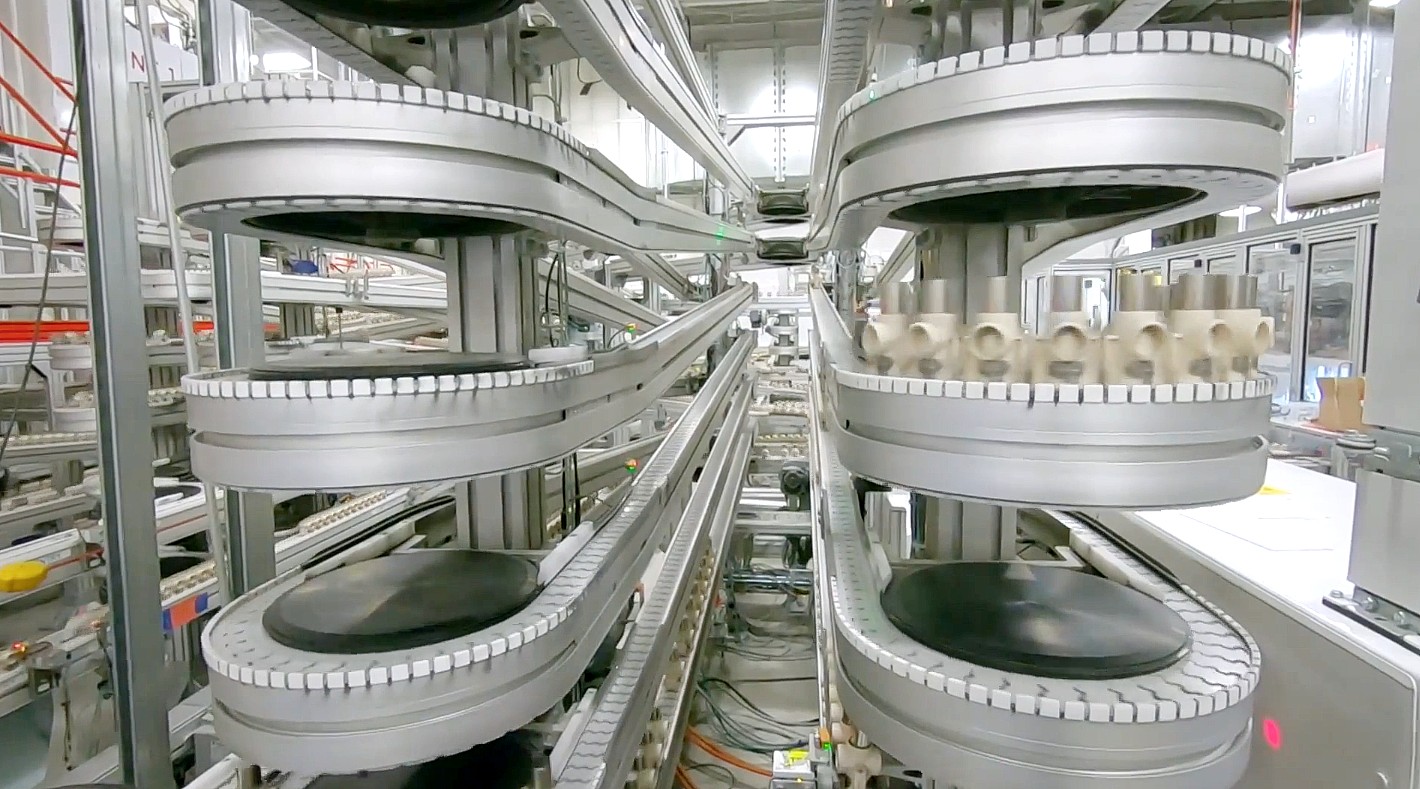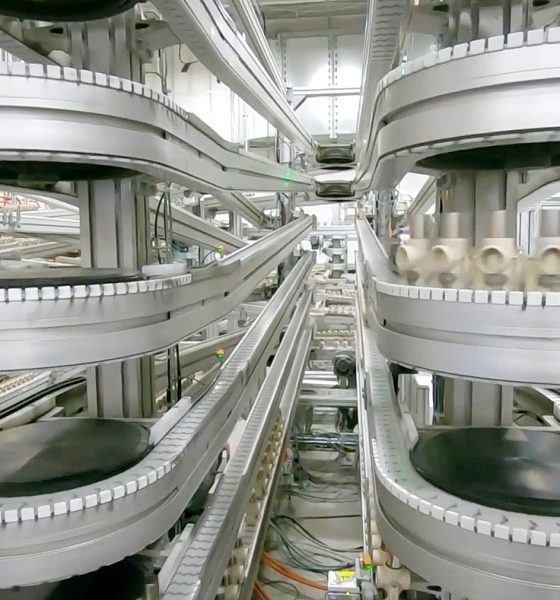

News
Tesla battery partner LG Chem sees revenue doubling by 2025 as EVs gain ground
The electric vehicle market may be hitting some bumps this year due to the pandemic, but one of Tesla’s key battery suppliers, LG Chem, is optimistic nonetheless. In a recent interview at his office in Seoul, LG Chem Chief Executive Officer Hak Cheol Shin noted that he expects the company to double its revenue by 2025, thanks in no small part to the momentum of electric car makers like Tesla.
As noted in a Bloomberg report, LG Chem’s revenue this year is expected to reach a record of 13 trillion won (about $11 billion). This is incredibly impressive, though the LG Chem CEO stated that the company’s revenue could hit 30 trillion won by 2025 (about $25 billion). Shin also noted that LG Chem has no issues when it comes to its supply chain, which should allow it to meet the demand of its customers.
“We have no problem in our supply chain and can deliver all of the orders from customers this year despite the coronavirus,” he said.
LG Chem sales have jumped 83% to 10.5 GWh, and part of this is due to Tesla’s ramp of the Made-in-China Model 3 in Gigafactory Shanghai. As noted by SNE Research, LG Chem’s partnership with Tesla, as well as the sales of the Renault Zoe, have helped the South Korean firm take the market lead over China-based Contemporary Amperex Technology Co. Ltd. (CATL). Interestingly enough, CATL also happens to be a partner of Tesla China.
According to Hwang Kyu-Won, an analyst at Yuanta Securities Korea Co., LG Chem’s partnership with Tesla would likely contribute greatly to the South Korean firm’s revenue goals, thanks to the American electric car maker’s dominating lead in the EV market. That being said, even if new companies and legacy automakers catch up to Tesla, LG Chem could still see notable benefits to its business.
“The point is how much LG will be able to get orders from Tesla, because everyone agrees Tesla will lead the electric-car market. However, if other automakers catch up with Tesla, that might be good news for LG Chem too, because of its diversified customers,” Hwang said.
Considering that Tesla has only just started entering the mass market with the Model 3 and the Model Y, the company’s business with LG Chem would likely go on for quite a long time. This is evident in Tesla’s partnership with Panasonic, which has been ongoing since 2009. If LG Chem could keep Tesla as a partner, its business would likely benefit from the notable momentum currently gathering in the EV sector.
As for the LG Chem CEO, he appears to believe that the global electric vehicle market still has a lot of growth yet. “The global electric vehicle industry itself is growing fast, but the penetration rate is about 3% now,” Shin said.

News
Tesla FSD fleet is nearing 7 billion total miles, including 2.5 billion city miles
As can be seen on Tesla’s official FSD webpage, vehicles equipped with the system have now navigated over 6.99 billion miles.

Tesla’s Full Self-Driving (Supervised) fleet is closing in on almost 7 billion total miles driven, as per data posted by the company on its official FSD webpage.
These figures hint at the massive scale of data fueling Tesla’s rapid FSD improvements, which have been quite notable as of late.
FSD mileage milestones
As can be seen on Tesla’s official FSD webpage, vehicles equipped with the system have now navigated over 6.99 billion miles. Tesla owner and avid FSD tester Whole Mars Catalog also shared a screenshot indicating that from the nearly 7 billion miles traveled by the FSD fleet, more than 2.5 billion miles were driven inside cities.
City miles are particularly valuable for complex urban scenarios like unprotected turns, pedestrian interactions, and traffic lights. This is also the difference-maker for FSD, as only complex solutions, such as Waymo’s self-driving taxis, operate similarly on inner-city streets. And even then, incidents such as the San Francisco blackouts have proven challenging for sensor-rich vehicles like Waymos.
Tesla’s data edge
Tesla has a number of advantages in the autonomous vehicle sector, one of which is the size of its fleet and the number of vehicles training FSD on real-world roads. Tesla’s nearly 7 billion FSD miles then allow the company to roll out updates that make its vehicles behave like they are being driven by experienced drivers, even if they are operating on their own.
So notable are Tesla’s improvements to FSD that NVIDIA Director of Robotics Jim Fan, after experiencing FSD v14, noted that the system is the first AI that passes what he described as a “Physical Turing Test.”
“Despite knowing exactly how robot learning works, I still find it magical watching the steering wheel turn by itself. First it feels surreal, next it becomes routine. Then, like the smartphone, taking it away actively hurts. This is how humanity gets rewired and glued to god-like technologies,” Fan wrote in a post on X.
News
Tesla starts showing how FSD will change lives in Europe
Local officials tested the system on narrow country roads and were impressed by FSD’s smooth, human-like driving, with some calling the service a game-changer for everyday life in areas that are far from urban centers.

Tesla has launched Europe’s first public shuttle service using Full Self-Driving (Supervised) in the rural Eifelkreis Bitburg-Prüm region of Germany, demonstrating how the technology can restore independence and mobility for people who struggle with limited transport options.
Local officials tested the system on narrow country roads and were impressed by FSD’s smooth, human-like driving, with some calling the service a game-changer for everyday life in areas that are far from urban centers.
Officials see real impact on rural residents
Arzfeld Mayor Johannes Kuhl and District Administrator Andreas Kruppert personally tested the Tesla shuttle service. This allowed them to see just how well FSD navigated winding lanes and rural roads confidently. Kruppert said, “Autonomous driving sounds like science fiction to many, but we simply see here that it works totally well in rural regions too.” Kuhl, for his part, also noted that FSD “feels like a very experienced driver.”
The pilot complements the area’s “Citizen Bus” program, which provides on-demand rides for elderly residents who can no longer drive themselves. Tesla Europe shared a video of a demonstration of the service, highlighting how FSD gives people their freedom back, even in places where public transport is not as prevalent.
What the Ministry for Economic Affairs and Transport says
Rhineland-Palatinate’s Minister Daniela Schmitt supported the project, praising the collaboration that made this “first of its kind in Europe” possible. As per the ministry, the rural rollout for the service shows FSD’s potential beyond major cities, and it delivers tangible benefits like grocery runs, doctor visits, and social connections for isolated residents.
“Reliable and flexible mobility is especially vital in rural areas. With the launch of a shuttle service using self-driving vehicles (FSD supervised) by Tesla in the Eifelkreis Bitburg-Prüm, an innovative pilot project is now getting underway that complements local community bus services. It is the first project of its kind in Europe.
“The result is a real gain for rural mobility: greater accessibility, more flexibility and tangible benefits for everyday life. A strong signal for innovation, cooperation and future-oriented mobility beyond urban centers,” the ministry wrote in a LinkedIn post.
News
Tesla China quietly posts Robotaxi-related job listing
Tesla China is currently seeking a Low Voltage Electrical Engineer to work on circuit board design for the company’s autonomous vehicles.

Tesla has posted a new job listing in Shanghai explicitly tied to its Robotaxi program, fueling speculation that the company is preparing to launch its dedicated autonomous ride-hailing service in China.
As noted in the listing, Tesla China is currently seeking a Low Voltage Electrical Engineer to work on circuit board design for the company’s autonomous vehicles.
Robotaxi-specific role
The listing, which was shared on social media platform X by industry watcher @tslaming, suggested that Tesla China is looking to fill the role urgently. The job listing itself specifically mentions that the person hired for the role will be working on the Low Voltage Hardware team, which would design the circuit boards that would serve as the nervous system of the Robotaxi.
Key tasks for the role, as indicated in the job listing, include collaboration with PCB layout, firmware, mechanical, program management, and validation teams, among other responsibilities. The role is based in Shanghai.
China Robotaxi launch
China represents a massive potential market for robotaxis, with its dense urban centers and supportive policies in select cities. Tesla has limited permission to roll out FSD in the country, though despite this, its vehicles have been hailed as among the best in the market when it comes to autonomous features. So far, at least, it appears that China supports Tesla’s FSD and Robotaxi rollout.
This was hinted at in November, when Tesla brought the Cybercab to the 8th China International Import Expo (CIIE) in Shanghai, marking the first time that the autonomous two-seater was brought to the Asia-Pacific region. The vehicle, despite not having a release date in China, received a significant amount of interest among the event’s attendees.








